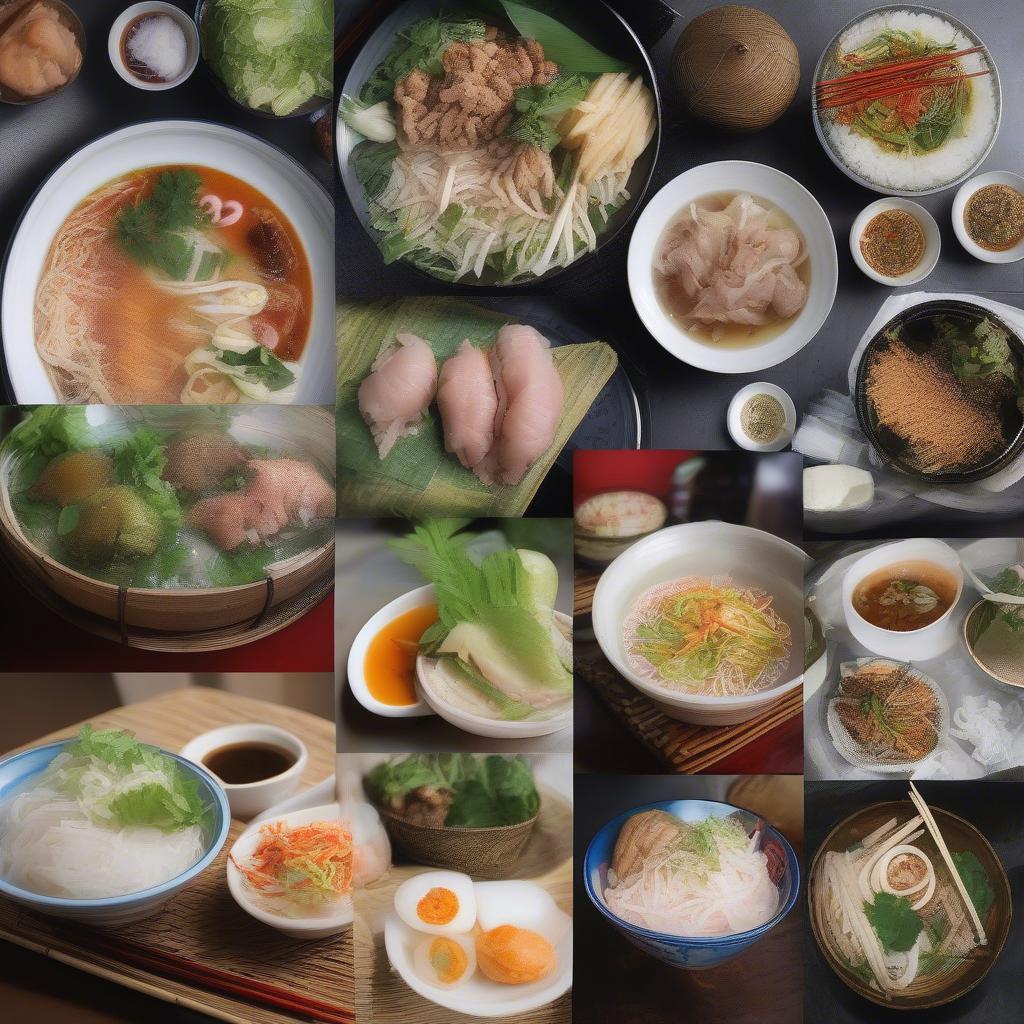
Vietnamese street food is a vibrant tapestry of flavors, aromas, and cultural traditions. From bustling city streets to quiet rural villages, the sights and sounds of street vendors preparing and serving delicious dishes are a defining characteristic of Vietnamese life. But where did this vibrant culture originate and what are the must-try dishes for anyone venturing into the world of Vietnamese street food? This guide explores the rich history, regional variations, and essential experiences that make Vietnamese street food a culinary adventure.
Table Content:
The History of Vietnamese Street Food
Vietnamese street food is deeply rooted in the country’s agricultural heritage and its long history of foreign influences. The French colonial era introduced baguettes and coffee, leading to the creation of the iconic banh mi. Chinese influences are evident in dishes like pho, while Southeast Asian flavors have contributed to the diverse range of spices and herbs used in Vietnamese cuisine. For centuries, street food has provided affordable and accessible meals for people from all walks of life. It’s a tradition that continues to thrive today, evolving and adapting to modern tastes while preserving its authentic core.
Regional Variations: A Culinary Journey Across Vietnam
From the fragrant pho of Hanoi in the north to the savory banh xeo of the central region and the sweet che desserts of the south, Vietnamese street food offers a diverse culinary landscape. Each region boasts its own unique specialties, reflecting the local climate, ingredients, and cultural preferences. Exploring these regional variations is like embarking on a delicious journey across Vietnam. In the north, you’ll find heartier dishes influenced by Chinese cuisine, while the south offers a lighter, sweeter palate influenced by Khmer and Thai flavors. The central region is known for its spicy dishes and fresh seafood.
 Regional variations of Vietnamese street food from North to South
Regional variations of Vietnamese street food from North to South
Must-Try Dishes: From Pho to Banh Mi
No exploration of Vietnamese street food is complete without indulging in its iconic dishes. Pho, a fragrant noodle soup, is a national staple, often enjoyed for breakfast. Banh mi, a crispy baguette filled with savory ingredients, is a perfect example of fusion cuisine. Goi cuon, fresh spring rolls packed with herbs and vermicelli noodles, are a light and refreshing option. These are just a few examples of the countless delicious dishes waiting to be discovered on Vietnam’s streets. From savory to sweet, there’s something to satisfy every craving.
“Vietnamese street food is about more than just the food itself; it’s an experience,” says Linh Nguyen, a renowned Vietnamese chef. “It’s about the interaction with the vendors, the bustling atmosphere, and the sense of community that comes with sharing a meal on the street.”
![]() Iconic Vietnamese street food dishes: Pho and Banh Mi
Iconic Vietnamese street food dishes: Pho and Banh Mi
Experiencing Vietnamese Street Food: Tips and Tricks
Navigating the world of Vietnamese street food can be an adventure. Don’t be afraid to try new things, ask questions, and embrace the vibrant atmosphere. Look for busy stalls, a sign of popularity and freshness. Bargaining is often expected, especially in tourist areas. Most importantly, be open to new flavors and experiences.
“The best way to experience Vietnamese street food is to immerse yourself in the culture,” advises travel writer and food enthusiast, Mark Johnson. “Talk to the vendors, learn about the ingredients, and enjoy the vibrant energy of the streets.”
 Tips for enjoying Vietnamese street food
Tips for enjoying Vietnamese street food
Conclusion: A Culinary Adventure Awaits
Vietnamese street food is more than just a meal; it’s a cultural immersion. It’s a story told through flavors, aromas, and the vibrant energy of the streets. So, the next time you ask yourself, “Who Stole My Cheese?”, remember the adventure that awaits in the world of Vietnamese street food, where every bite is a discovery.
FAQ
What are some vegetarian options for Vietnamese street food? Many dishes can be adapted for vegetarians, with tofu or mushrooms replacing meat. Goi cuon and various noodle dishes are often naturally vegetarian.
Is it safe to eat street food in Vietnam? Generally, yes. Look for busy stalls with high turnover and good hygiene practices.
How much does Vietnamese street food cost? Most dishes are incredibly affordable, ranging from a few thousand to a few tens of thousands of Vietnamese Dong.
What are some essential phrases to know when ordering street food? Learning a few basic Vietnamese phrases, like “xin chào” (hello) and “cảm ơn” (thank you), will enhance your experience.
Where can I find the best street food in Vietnam? Major cities like Hanoi, Ho Chi Minh City, and Hoi An are street food havens, but you can find delicious treats in almost every town and village.
What is the best time to eat street food in Vietnam? Anytime! Street food is available throughout the day, from early morning breakfasts to late-night snacks.
Are there any specific etiquette rules to follow when eating street food? Be respectful, clean up after yourself, and enjoy the experience!